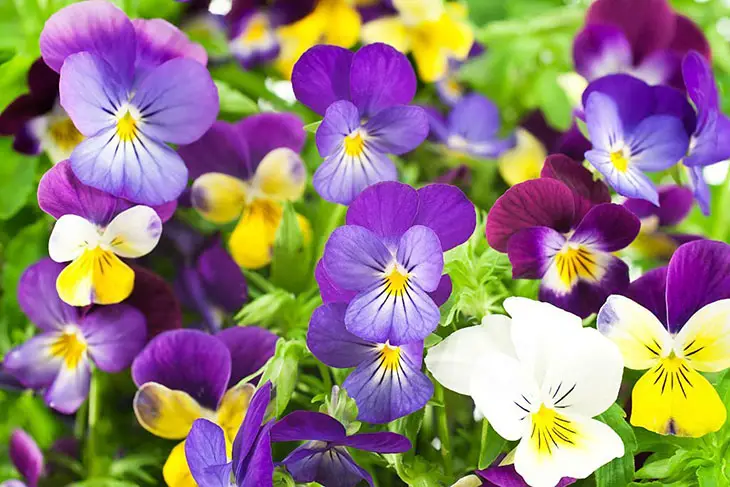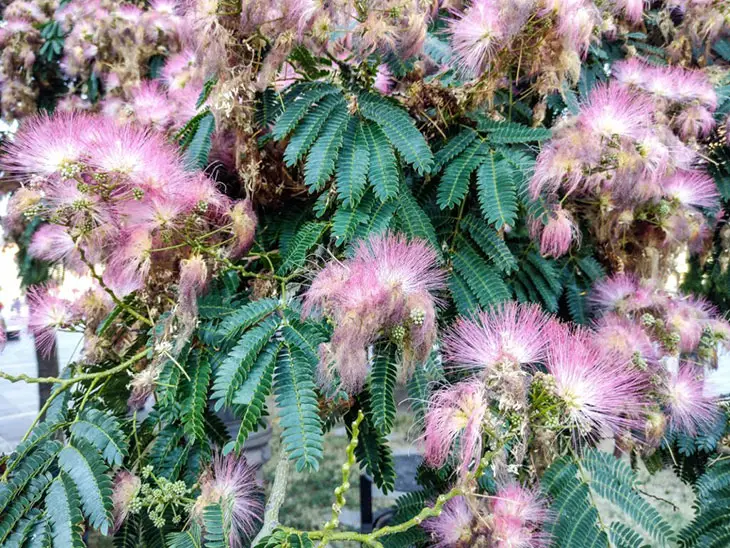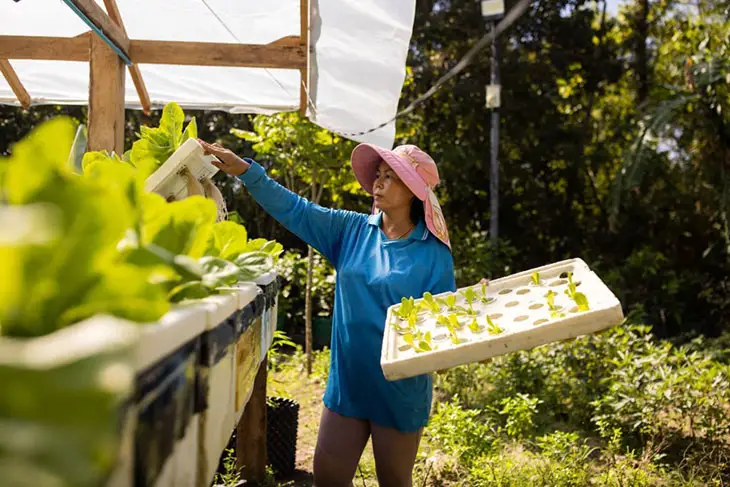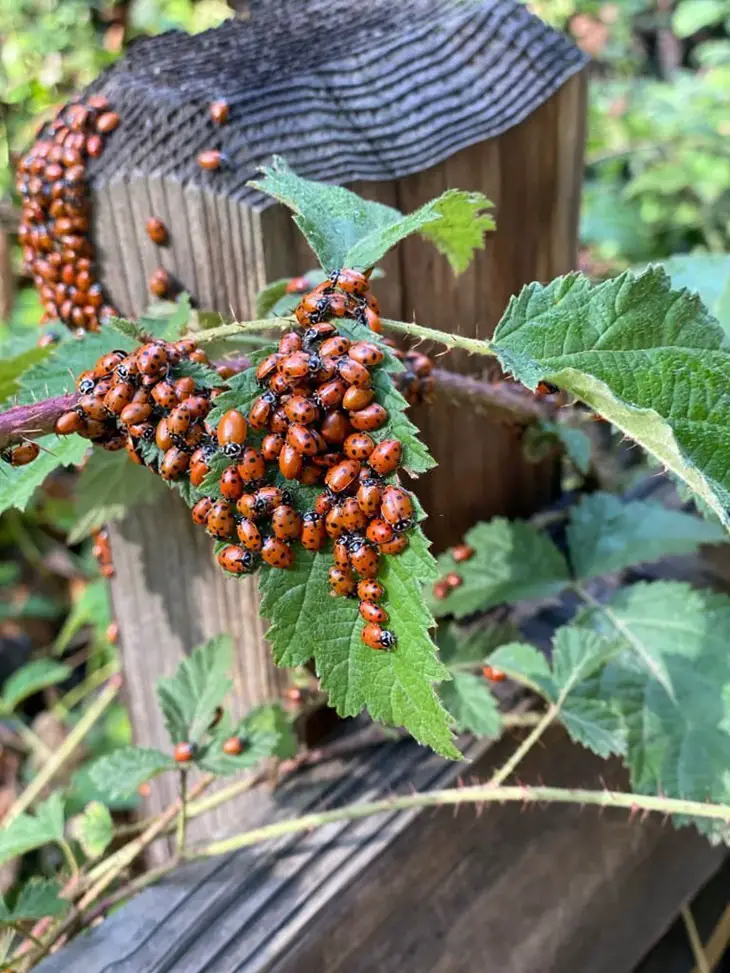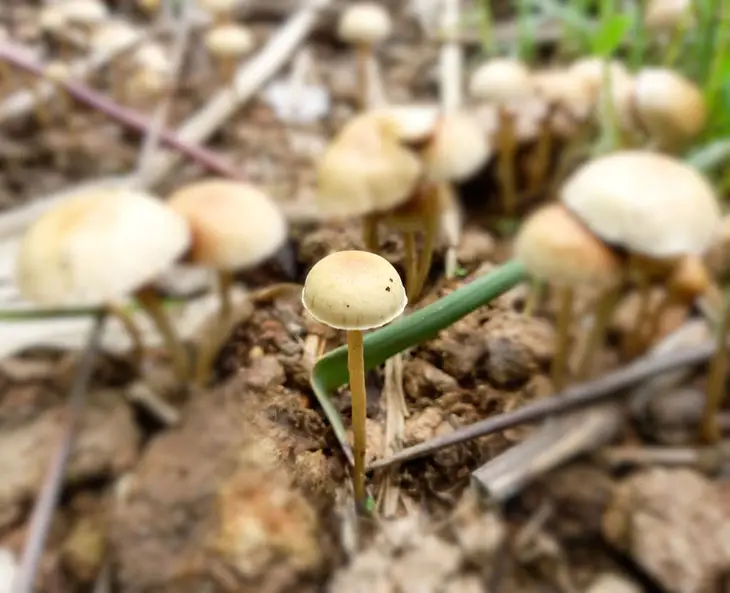
Mushrooms are interesting plants adaptable to various habitats with adequate nutrients, shade, and moisture.
Besides humus surfaces, tree trunks, and soil substrates, they can also grow on animal dung, such as horse manure.
If you’re working on a mushroom project and are interested in those horse poop mushrooms, you’ve come to the right place!
My article gives you 8 types of common mushrooms that grow in horse manure and also how to grow them properly.
Top 8 Mushrooms That Grow In Horse Manure
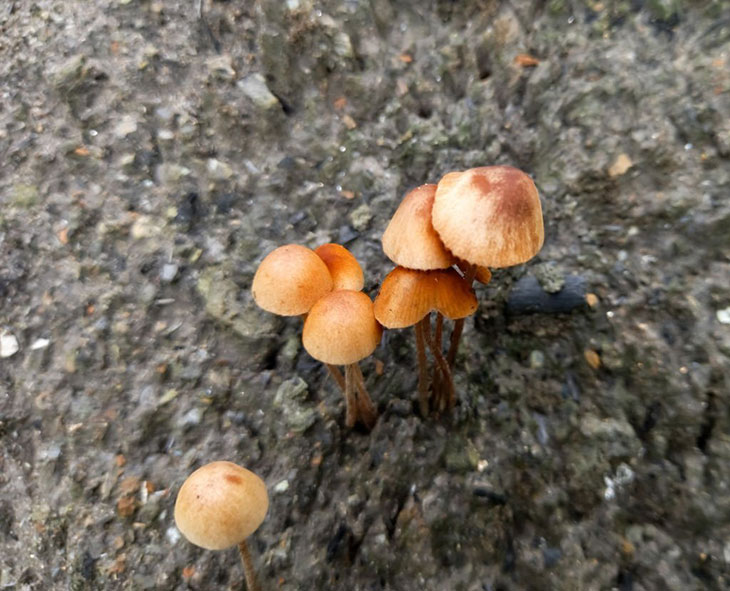
Because horse manure provides good moisture and is rich in nutrients, it is very suitable for the growth of fungi. Among the fungi that often grows on horse dung, 8 have the highest density.
Their detailed descriptions have been summarized below.
Snowy Inkcap Mushroom
This type of mushroom looks exactly like a tiny white (sometimes cream) bell. They are only about 2 inches or less and usually appear from summer to fall.
This fungus occurs a lot in Scandinavia and some countries located in the north of the European continent. They are also found in North America, Ireland, and the UK.
The body of the Snowy Inky Cap mushroom is quite fragile, with a white powder coating on its hat and body.
In terms of toxicity, it is closely related to some poisonous mushrooms, such as Coprinopsis Picacea and Magpie Inkcap.
If you want to try processing or using it as animal food, it’s best to give up that thought.
Singer Cap Mushroom
Singer Cap mushrooms (or Psilocybe Cubensis) are ivory-white, with a broad conical cap and a brown-to-yellow central part.
The bruised places of the Singer Cap mushrooms can change from white to light blue. This mushroom is quite toxic and can cause hallucinations for those who accidentally eat it.
You can see this fungus grown on horse manure all year round and is usually 2 to 6 inches tall.
As a tropical species, they are abundant in the coastal and southeastern United States, Southeast Asia, and tropical regions.
Nail Fungus Mushroom
Nail Fungus mushrooms are beige to gray, often thriving on horse dung in the fall and spring. It has a long, cylindrical black stem with roots deep into the waste to absorb nutrients.
Their bodies are soft and velvety, with a height of no more than 2 inches. In the UK, you can only find this fungus in the New Forest, where more than 3000 ponies are grazed.
Blistered Cap Mushroom
Blistered Cup mushrooms (or Peziza Vesiculosa) are an apothecial species from the family Pezizaceae. It occurs very commonly in Europe and, to a lesser extent, in other parts of the world.
This mushroom has a cup-like lid with various colors (beige, gray, yellow), width ranging from 1-3½ inches in diameter. They habitually grow in clusters, and each mushroom is about 2 to 6 inches tall.
They prefer nutrient-rich soil, manure, compost, and rotting straws. Although easy to grow, this poisonous mushroom is not suitable for livestock.
Dung-Trauschling Mushroom
The Dung-Trauschling mushroom (also known as Psilocybe Merdaria or Stropharia Merdaria) is characterized by its dark brown flesh that is rough and sticky every time you touch it.
Its body is pale yellow or white, the base is covered with white fluff, and the conical cap is 1-2 inches wide.
This Psilocybe Merdaria fungus is common from late summer to late fall and only grows to a maximum height of 2 inches.
They release spores into the surrounding vegetation, which herbivores ingest, and excrete the fecal/spore mixture. They will grow into mushrooms and continue the same life cycle.
Orton Schaf-Dungerling Mushroom
Orton Schaf-Dungerling Mushroom (or Panaeolus Speciosus) ranges in height from 2 to 6 inches and thrives in late summer to fall.
They have long bodies ranging from beige to dull brown and gray, and the base is milky white. The cap is conical and convex with a width of ¾ – 3 inches; the color tends to be darker around the cap’s edges.
Of course, the more brightly colored most mushrooms are, the more toxic they are. Therefore, never be attracted by their eye-catching appearance.
Bell-Shaped Mottlegill Mushroom
Bell-Shaped Mottlegill fungus (also known as Panaeolus Campanulatus and Glockendungerling) has a gray/brownish-gray body, about 2 inches tall and considerably longer than the cap.
Their light beige lids are conical and semi-filled, 1 – 1,5 inches in diameter, with a reddish-brown color in the center.
This tall fungus is most commonly found in farm fields or overgrown grassy areas in late summer to autumn. It originated in North America, then spread to the UK, Ireland, and some European countries.
Garten-Dungerling Mushroom
Garten-Dungerling (or Panaeolus Subbalteatus) thrives in early summer through late fall on the farms of North and South America, Siberia, Hawaii, and Africa.
It has a light brown stem, while the cap is dark reddish brown. The cap of this wild mushroom is first convex, then gradually develops into a flat shape with a width of ¾ inch to 2½ inches.
How To Grow Horse Poop Mushrooms?
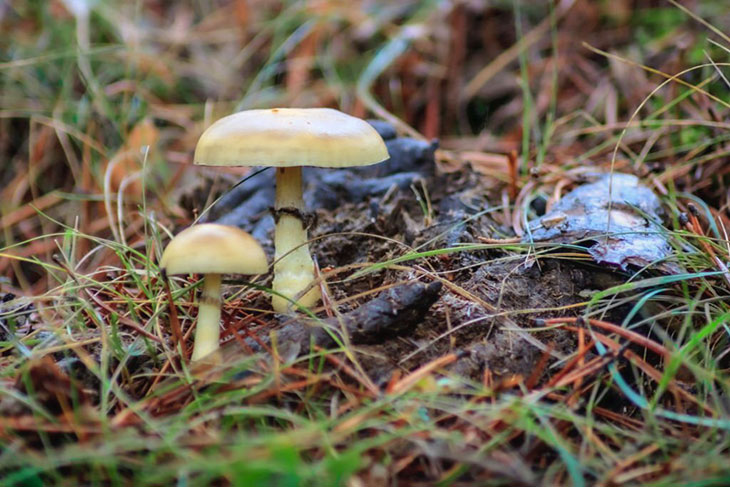
The home mushroom growing project allows you to enjoy this dish whenever possible.
Some mushrooms are well adapted to horse dung and easy to grow Shiitake, Portobello, Morchella, or Porcini.
If you’re ready to plant, follow our 5 step-by-step processes below for a bountiful mushroom harvest!
Step 1: Collect Tools
Luckily, growing mushrooms with horse manure doesn’t require too many tools. If you don’t know where to start, make sure you have the needed tools below:
- Planting tray
- Horse manure
- Mushroom spores
- Water spray
- Peat moss
- Newspapers
Step 2: Treat Horse Manure
Put compost horse manure in a bucket and break it into small pieces. If the stool is old, add just enough water to soften it.
Try gently squeezing the stool and water mixture. You must add some manure to correct the balance if there is running water. If you press harder and only a small amount comes out, the mixture has a suitable consistency.
Step 3: Select A Suitable Grow Tray
You can use a regular planting tray or order your custom-designed container at least 3 inches deep. The larger the growing tray, the more mushrooms are planted and grow independently instead of growing in a large cluster.
Step 4: Grow The Mushrooms
In this step, you need to put the fungal spores into the moist compost and mix them well. Then pour this mixture into the growing tray and gently press with your hands so that the mixture sits neatly inside. During the growth of the fungus, you need to keep the planting tray in a cool place with an ideal temperature between 65 – 75 degrees F.
Step 5: Conduct “Mushrooms Care”
Tiny white cobwebs appearing on the surface indicate healthy growing fungal spores. Cover 1-2 inches of peat moss on top of the compost mix, then cover it with another layer of newspaper.
Use a spray bottle to moisten the newspaper and move the growing tray to a temperature of about 55 degrees F. If you forget to wet the newspaper, it will create trouble as the manure and peat moss absorb the moisture from the paper.
When sprouts appear, remove the top layer of the newspaper. You should always spray water for the peat moss twice a day to keep the fungus healthy. Once the mushrooms have grown to the desired size, use scissors to cut them.
Are Mushrooms That Grow In Horse Poop Poisonous?
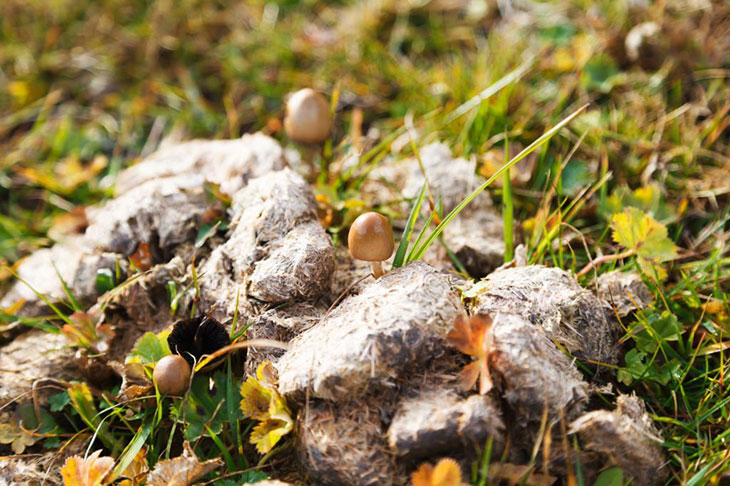
You should be aware that all fungi that grow naturally from horse manure are toxic to human and livestock health.
If you ignore this warning and use these fungi, people and pets run the risk of affecting the nervous system and other vital systems.
Faqs
Do Psychedelic Mushrooms Grow In Horse Poop?
Yes! Psilocybe Cubensis typically thrives on horse and cow dung, nutrient-rich soil, or cane mulch.
They are usually distributed in the territories of the Southern Hemisphere from November to April and the Northern Hemisphere from February to December.
Do Magic Mushrooms Grow In Horse Poop?
Sure! The Magic mushrooms are fond of cane mulch, fertile farm pastures, and livestock manures like buffalo, cows, and horses.
Besides the hallucinogen, this mushroom also causes bad consequences such as vomiting, nausea, and gastrointestinal problems.
Do Edible Mushrooms Grow In Poop?
The answer is definitely yes! Coprophilous fungi will release their spores into the vegetation waiting for herbivores to eat them.
Then, the common will escape through the digestive tract and grow from the animal’s feces.
Some Last Words
Knowing the identification characteristics of some wild mushrooms that grow in horse manure will greatly help you in your projects of growing mushrooms on your farm.
But remember that these naturally occurring surface-grown varieties have strong toxins that can harm your pet’s health.
Instead of trying these mushrooms, you should use horse manure as a nutrient medium to care for the healthier mushrooms.
